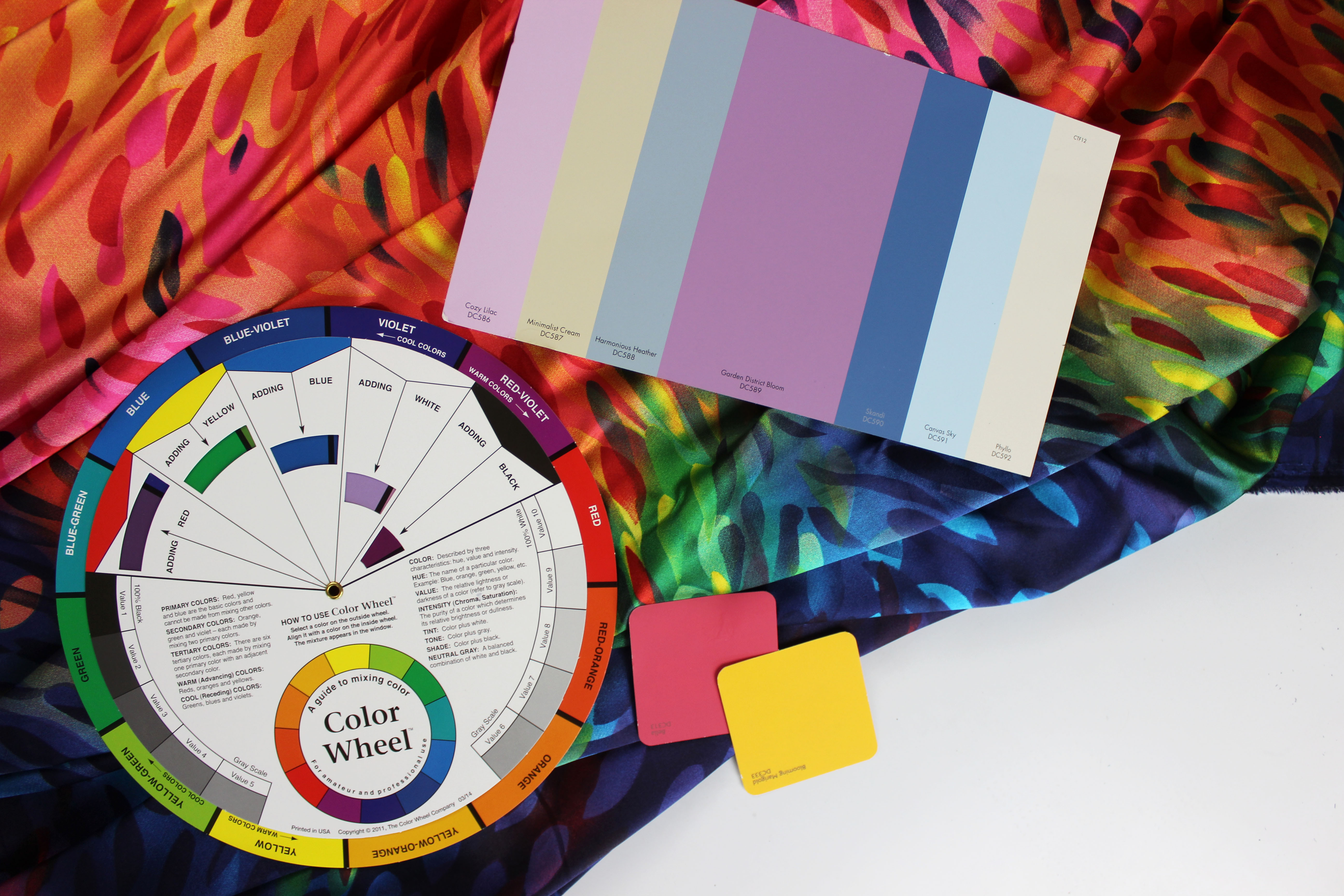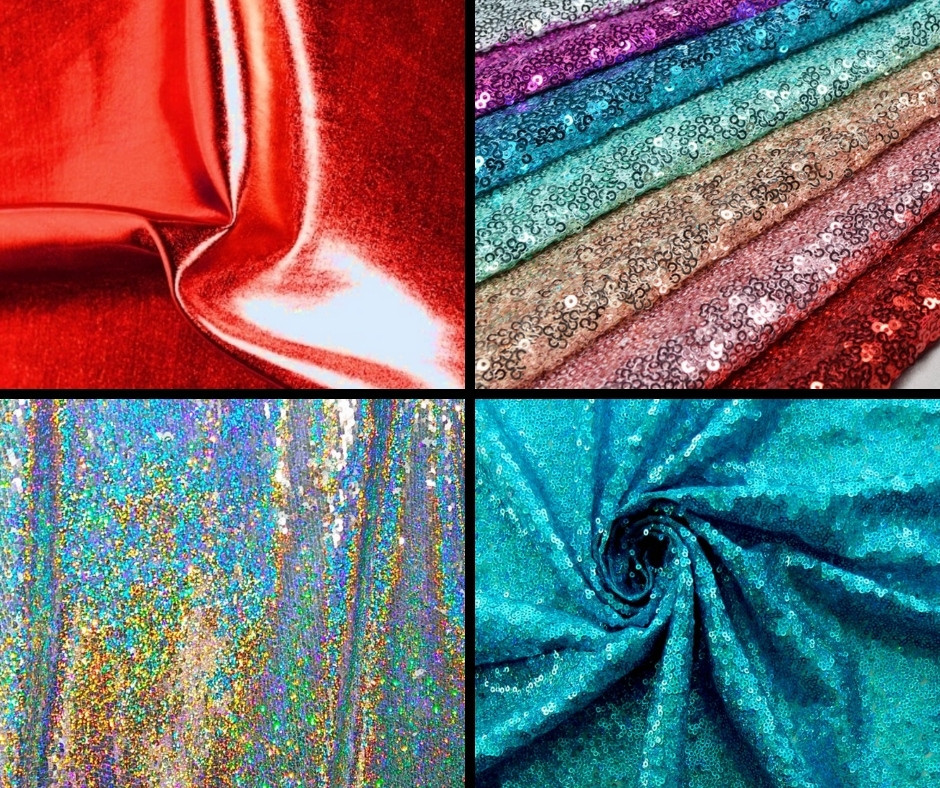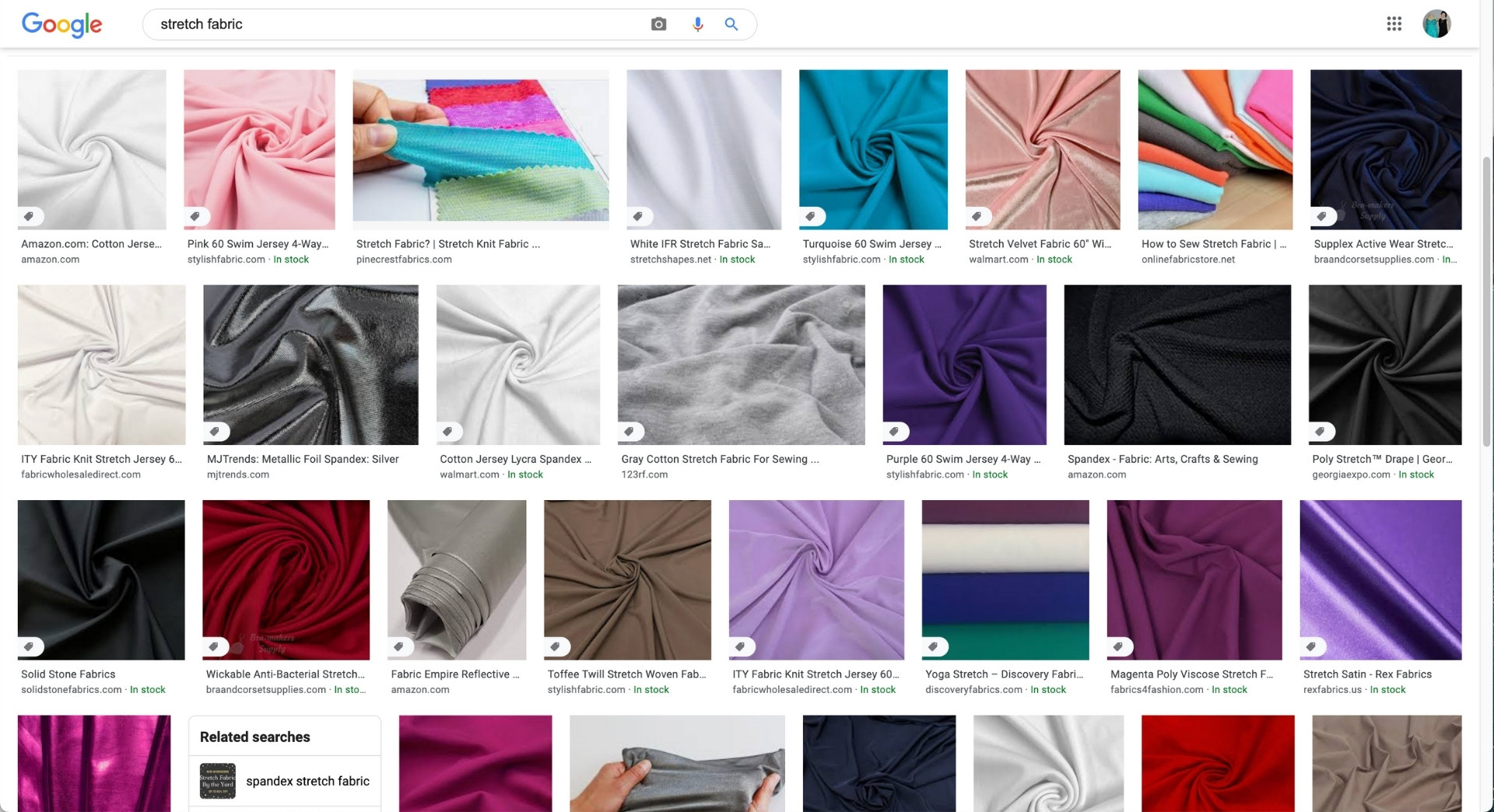Choosing the right stretch fabrics for a ballroom dancing dress can feel overwhelming. The fabric you select can truly make or break your costume – and more importantly, your confidence on the dance floor. I learned this lesson the hard way early in my career.
Back in 1989, at my first U.S. Ballroom Championships, I was fresh out of college and determined to make a statement. I had moved across the country to pursue my passion for ballroom dancing, leaving behind my architecture studies. Immediately upon arriving, I was told I needed to lose weight to meet ballroom standards. Alongside rigorous dance training, I was also sewing my first “official” Rhythm dance dress for the championships.
 Teresa Sigmon ballroom dance dress sketch fortuny pleating
Teresa Sigmon ballroom dance dress sketch fortuny pleating
Having designed dresses since my teenage years, I was inspired by haute couture. For this major competition, I envisioned a striking black and white, asymmetrical Rhythm dress featuring Fortuny pleating. I invested a significant amount in custom-pleated white silk, feeling incredibly proud of my fashionable and intricate creation.
But there were two critical flaws I completely overlooked:
- The internet wasn’t what it is today, and I was unaware that haute couture styling wasn’t the norm in ballroom dancing at that time.
- More importantly, I didn’t realize that white fabric, combined with all that pleating, would make me appear larger than I actually was, despite my efforts to lose weight!
After my first round of dancing at the U.S. Ballroom Championships, a judge approached me, visibly displeased. Gesturing emphatically at my dress, he exclaimed, “Why are you wearing white? It makes you look heavy, especially after you’ve lost weight!”
I was utterly crushed. The dress, which had consumed so much time, money, and effort, became a symbol of humiliation. As soon as I returned home, I threw it away. It was a painful lesson: the wrong fabric choices can detract from your performance and appearance, regardless of the design’s complexity or cost.
That experience taught me a crucial lesson: the color and texture of your fabric can dramatically alter your perceived size and shape. White, notoriously, is the least flattering color if you want to appear slimmer. Furthermore, the Fortuny pleating and voluminous fans added unnecessary bulk to my frame. My attempt to create a fashionable, slimming dress backfired spectacularly due to poor fabric choices.
Let my ballroom dress disaster serve as a cautionary tale, so you can avoid making the same mistakes.
The Importance of Fabric Choice for Ballroom Dancing Dresses
Fabric choices truly matter when creating ballroom and other dance costumes. Understanding the nuances of stretch fabrics is essential for any dancer or designer aiming to create a flattering and functional ballroom dancing dress.
Light vs. Dark Colors for Ballroom Dresses
Color is one of the most impactful elements of fabric choice for dance dresses. The color you select can significantly influence how you appear on the dance floor.
If your goal is to look thinner or more streamlined, opt for medium to darker tones. Darker colors have a slimming effect, helping to create a more slender silhouette under the bright lights of the ballroom.
Conversely, if you are petite or wish to add visual volume, lighter colors and medium tones can be your allies. These shades can help create the illusion of a fuller figure.
For a deeper dive into color theory and how to choose the most flattering shades for your complexion and body type, explore resources on color analysis and personal styling. Understanding your best colors is a foundational step in designing a truly stunning ballroom dancing dress.

Shiny vs. Matte Stretch Fabrics in Dance Costumes
Beyond color, the choice between shiny and matte stretch fabrics is another critical consideration for Ballroom Dancing Dresses and skate costumes.
Matte stretch fabrics are incredibly versatile and universally flattering. They possess a “neutral” quality that can elongate the figure and create a slimming effect, especially when paired with strategically placed accent fabrics. While matte fabrics won’t make a very thin dancer appear smaller, they provide a sophisticated and elegant base for any design.
 long line Latin dress, chainette fringe, Maria Arthur Murray Temecula
long line Latin dress, chainette fringe, Maria Arthur Murray Temecula
Because of their neutral nature, matte fabrics complement a wide range of body types. Furthermore, the lack of shine in matte fabrics allows embellishments like rhinestones and sequins to truly stand out, adding sparkle and visual interest without overwhelming the overall look.
Consider exploring designs that utilize matte stretch crepe, a popular choice for ballroom dresses, often paired with contrasting lace appliqués to enhance the perception of height and graceful lines.
Shiny fabrics, on the other hand, tend to reflect light and can make a person appear larger. Examples of shiny stretch fabrics frequently used in dance costumes include metallic foil fabrics, sequined fabrics, holographic fabrics, and crushed velvet.
 liquid foil and holographic sequin fabric examples of shiny fabricsExamples of shiny fabrics in dance costume design.
liquid foil and holographic sequin fabric examples of shiny fabricsExamples of shiny fabrics in dance costume design.

If you love the glamour of shiny fabrics and embellishments but want to avoid adding visual bulk, the key is to use them strategically as accents. Instead of making the entire ballroom dancing dress from a shiny fabric, incorporate it as detailing.
For instance, using a matte stretch velvet as the primary fabric and adding accents of shiny crepe back satin on a skirt or bodice can provide sparkle without compromising a streamlined silhouette. Similarly, fringe, available in both matte and shiny versions (like metallic fringe versus classic chainette fringe), offers another way to incorporate texture and movement. Rhinestones themselves add shine and can be used to create slimming patterns on matte fabrics, achieving sparkle with a slimming effect.
 example of matte stretch fabric with slimming rhinestone design
example of matte stretch fabric with slimming rhinestone design
Stretch Velvet Considerations for Ballroom Dance Costumes
Generally, stretch velvet is considered a matte fabric, offering a rich, luxurious look perfect for ballroom dancing dresses. However, crushed velvet, due to its textured, light-reflecting surface, leans more towards the shiny category.
Most dancers can wear stretch velvet beautifully. It’s important to note that velvet comes in varying thicknesses. Always obtain samples to assess the weight and drape of the fabric. For dancers seeking a slimmer appearance or better breathability on the dance floor, a lightweight velvet with a short nap is preferable. Conversely, a thinner dancer or ice skater needing warmth might choose a thicker velvet with a longer nap.
 julie vincent wearing a purple velvet Latin dress
julie vincent wearing a purple velvet Latin dress
Consider a dress made from lightweight matte glitter stretch velvet in a dark color, accented with shiny glitter mesh. This combination allows for subtle sparkle and visual interest without sacrificing a flattering silhouette, perfect for showcasing curves in a ballroom setting. The tone-on-tone glitter in the velvet mimics the subtle shimmer of rhinestones, adding depth rather than overall shine.
Tips for Working with Stretch Fabrics for Dance Dresses
Sewing with stretch fabrics presents unique challenges, as the stretch factor varies significantly between different types and even dye lots of the same fabric.
 general stretch fabrics for dance and skate costumes
general stretch fabrics for dance and skate costumes
The most important advice when working with stretch fabrics for ballroom dancing dresses is to always request fabric samples whenever possible. This allows you to test the fabric’s stretch, drape, and suitability for your design before committing to a larger purchase.
Understanding how to handle different stretch fabrics and adjust patterns accordingly is a crucial skill for any dance costume designer. Mastering these techniques will elevate the quality and fit of your ballroom dancing dresses.
Never miss free dressmaker training! Get the Sew Like A Pro™ newsletter.
We value your privacy and would never spam you

